“I was left in awe. I didn’t know what to say except thank you. Our core values were repeated back to us as we were given this gift and investment. I thought, ‘Wow, we can now support the growth of our organization and concentrate on our work, not the fundraising needed.'”
– Nonprofit Leader quoted in year one of CEP’s three-year study, “Giving Big: The Impact of Large, Unrestricted Gifts on Nonprofits”
“[I]t just boosted my confidence and my ability to do visionary, strategic, necessary work.”
– Nonprofit Leader quoted in year two of CEP’s three-year study, “Emerging Impacts: The Effects of MacKenzie Scott’s Large, Unrestricted Gifts”
“If the world had 1,000 MacKenzies (and it does) … what a wonderful world it would be. We are trying to do so much with so little, and this type of vetted giving is what we all need. Thank you!”
– Nonprofit Leader quoted in year three of CEP’s three-year study, “Breaking the Mold: The Impact of Large, Unrestricted Gifts on Nonprofits”
These quotes are not just moving and powerful testimony, but a vital component of the findings of the Center for Effective Philanthropy’s research into the impacts of MacKenzie Scott’s large, unrestricted gifts. In three years of studying the impact of Scott’s pathbreaking approach to philanthropy on nonprofit recipients, CEP’s Research team has heard time and again attestation to the transformative effect of those gifts.
These transformations took place at the individual level — boosting confidence, reducing burnout, and sparking innovation for leaders — as well as at the organizational and community level, improving nonprofit financial sustainability and empowering recipients to create meaningful changes for their communities.
Thus, in this final year of CEP’s three-year study, it seemed particularly important to showcase the experiences of nonprofit leaders and organizations, first-hand. That is the goal of the companion piece — “Transformative Gifts: Inside Organizations That Received MacKenzie Scott Grants — we share this year alongside the final report in the study. In sharing this collection of seven profiles of organizations who received Scott gifts, we hope to add color and bring to life what this kind of giving can mean for organizations, communities, and leaders.
Below, we share just one of these “tales of transformation” to give you a sense of the power of these stories. Read the full companion piece here.
‘She Has Broken the Bureaucratic Donor Mold’
Good News Travels Slowly
MacKenzie Scott’s team tried for three days to reach Maanda Ngoitiko by phone. The call finally came late one
night, after Ngoitiko stopped in a dusty northern Tanzanian town with decent network connectivity.
“I was exhausted after a nine-hour drive,” Ngoitiko shared with me via Zoom. “I was charging my phone, and the
call came in. I heard a woman say, ‘I have very exciting news. You have been selected to receive an unrestricted
gift from MacKenzie Scott. We want you and your colleagues at the Pastoral Women’s Council to continue what
you’re doing. This funding is to advance your vision.’” The voice then told Ngoitiko the size of the gift, which
she and her board later decided to keep private. It was by far the largest they had ever received. “I can’t even
describe the feeling I had in my heart,” she told me. “If I ever meet our sister MacKenzie, I would straightaway
request permission to hug her and pass on my ancestors’ blessings.”
It Ends With Us
Ngoitiko grew up in a traditional Maasai pastoralist family, always in search of fresh grazing land and water for
their cattle. When Ngoitiko’s older sister turned 14, her sister was forced to leave school and get married. When
Ngoitiko reached the same age, her fathers and uncles tried to do the same to her. But the strong-minded
teenager managed to convince them to allow her to finish primary school.
Ngoitiko had no intention of being forced into a child marriage. So just after she completed her primary studies, she
packed a small sack with her belongings and sought refuge with the country’s first Maasai-led nongovernmental
organization. She went on to complete her secondary education in Dar es Salaam, then the country’s capital.
Thanks to a scholarship from the Embassy of Ireland in Dar es Salaam, she then moved from equatorial Tanzania
to chilly Ireland, where she perfected her English and earned a college degree in development studies.
Ngoitiko returned to Tanzania with the goal of helping other Indigenous women and girls from the Maasai, Sonjo,
Akie, Barabaig, Tatoga, and Hadzabe communities. She finally got her chance in 1997, when she and nine other
Maasai women, most of whom had survived gender-based violence, met under a sacred oseki tree in their
village and created the Pastoral Women’s Council.
Of Lions and Men
Their first order of business: rescuing young girls who wanted to escape child marriages. Soon after they established PWC, two women showed up at Ngoitiko’s small grass home late at night. They were the mother and older sister of a young girl who had just been forced to undergo female genital mutilation. The girl was going to be taken into marriage in three days’ time.
Ngoitiko and the two women set off on foot at sunrise to rescue the girl. They walked through the bush rather than by road to save precious time. As they were crossing a river, they came across four lions with their cubs. “I don’t know how we survived,” she explained. “Lions with their children are the most dangerous.”
Once the three women reached the village, Ngoitiko instructed the mother to tell her daughter to flee immediately and stop at a rendezvous point where she could meet up with the rescuers. The plan worked. But three days later, armed men from the girl’s village arrived at Ngoitiko’s home, where she was sheltering the girl. Ngoitiko’s brother and his male friends courageously stood up to them. “This girl is determined to do what she’s doing,” Ngoitiko’s brother shouted. “And if you are violent, I will run to the Loliondo police station.” Then he gave the men, who had not eaten in two days, some of his food. They left Loliondo in peace.
Within a few years, Ngoitiko and her colleagues turned their tiny rescue operation into a full-scale nonprofit capable of turning around the lives of women and girls throughout northeastern Tanzania. They started providing secondary school scholarships for rescued girls. (They’ve provided 2,500 to date.) Then, in 2006, they were entrusted with the management of the community-owned Emanyata Secondary School and began operating it as a safe haven and rescue home for girls fleeing gender-based violence and pursuing further education. They went on to build programs focused on strengthening women’s health, leadership, entrepreneurship, climate resilience, food security, and access to clean water.
This holistic, life-changing work has earned the Pastoral Women’s Council the backing of a host of international donors, including the Paul K. Feyerabend Foundation. But all of these gifts combined did not add up to what MacKenzie Scott gave them.
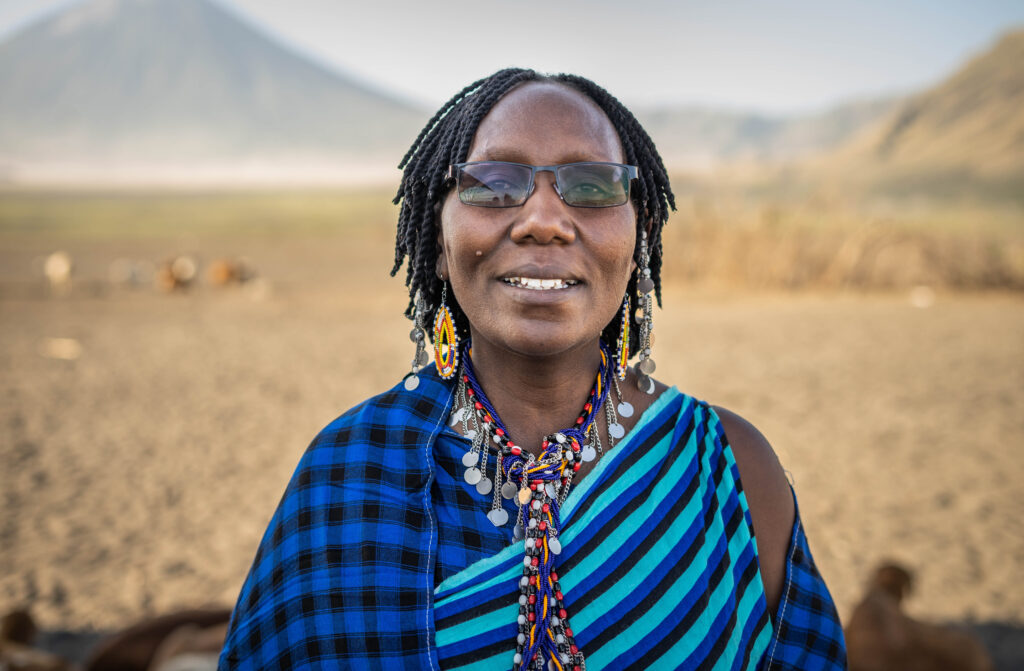
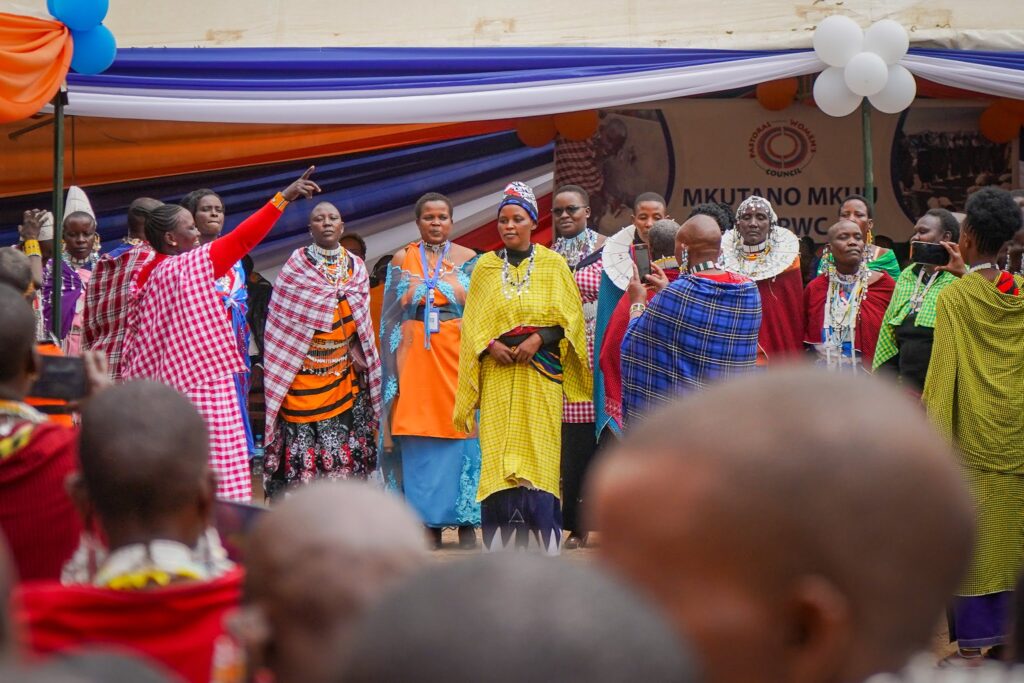
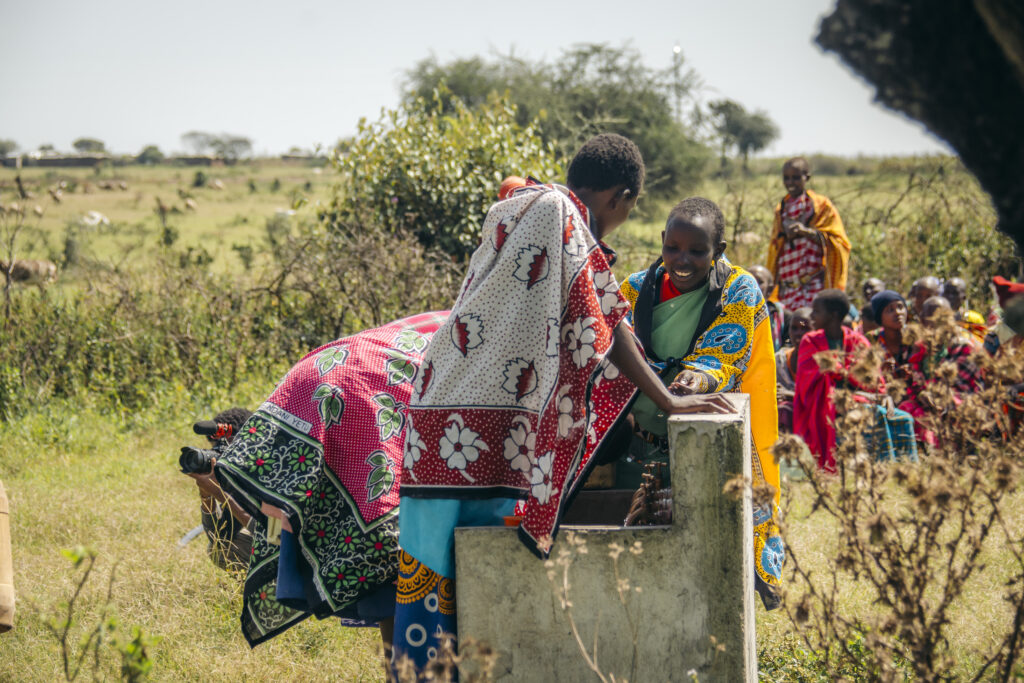
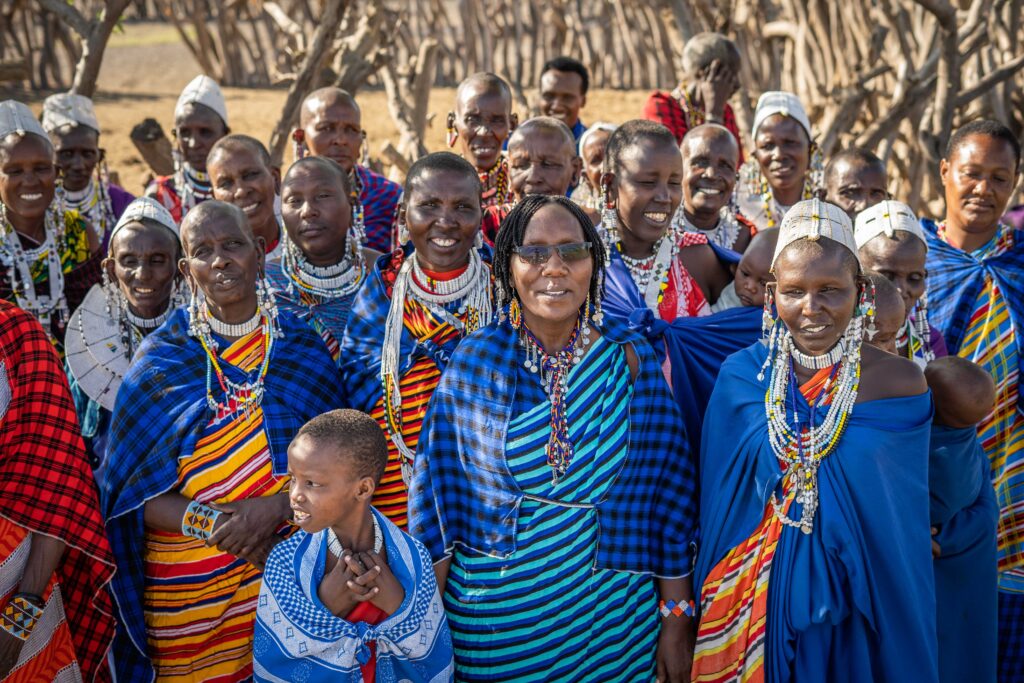
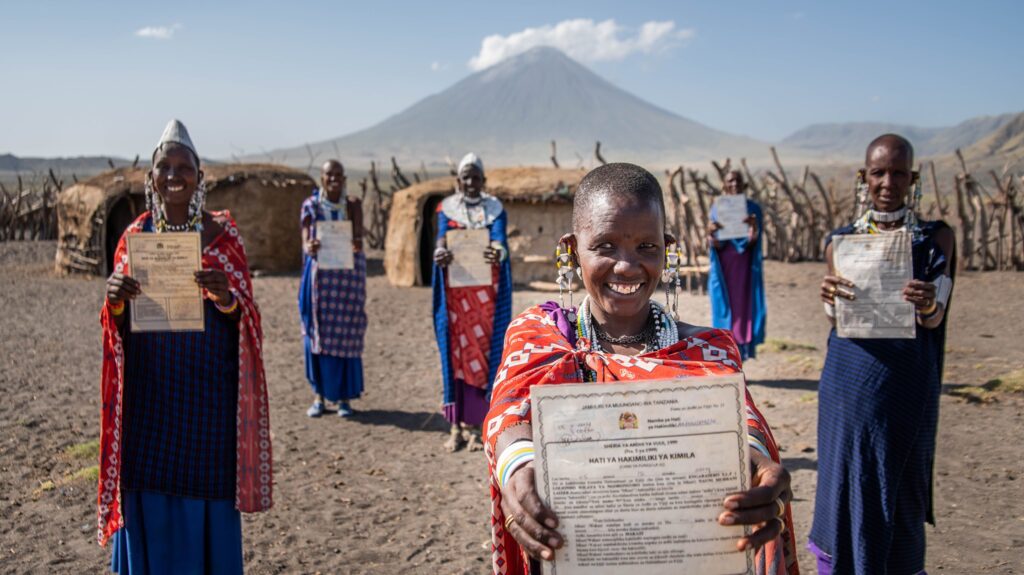
Sustainability and Sharing
To determine how to use Scott’s extraordinary gift to advance the organization’s 10-year vision, Ngoitiko planned a three-day board retreat in a very small town with little in the way of distraction. They included a board-management and capacity-building consultant who had worked closely with another Scott gift recipient, in Kenya. While some board members wanted to see PWC double or triple down on scholarships for the Emanyata Secondary School and other schools, the consultant pushed back. “She conducted a half day of training on how the money would go so quickly,” Ngoitiko recalled. “She helped us find a path that allowed us to pursue our long-standing dreams of sustainability” for PWC.
In practice, this meant allocating the Scott gift as follows:
- 25 percent for a new endowment
- 20 percent for scholarships (vocational, secondary, and postsecondary)
- 25 percent for building PWC’s own capacity (e.g., hiring a full-time communications expert and a full-time development professional)
- 30 percent for regranting to other community-based organizations in the region
It was clear on our call that Ngoitiko is most proud of the board’s unconventional decision to share its wealth with other NGOs serving women and girls. PWC has now provided financial support to 15 nonprofits led by women, across three districts. “We were so happy in our hearts to share the gift with other grassroots organizations, uplifting their vision,” Ngoitiko said. One of those partner nonprofits is Engishon Microfinance Ltd., the only microcredit company with products designed for pastoralist women. “Supporting community-based organizations and rural, women-managed pastoralist savings and credit groups has become our scaling model,” she said. “Our future plans include supporting Indigenous women–led CBOs and expanding our education programming across seven districts, and going beyond Tanzania to reach similarly challenged pastoralist women across East Africa.”
Today, PWC can rescue girls as young as 11 from many areas and put them on a completely different life trajectory. Overall, the organization is serving a total of 22,000 women and girls. The Scott gift “inspires us to work even harder to reach even more of the over 500,000 women and girls in our pastoralist community,” Ngoitiko shared.
Ngoitiko said that Scott’s trust-based approach helped amplify the impact of the award. “She has broken the bureaucratic donor mold that can unfairly burden grant recipients and create power imbalances in partnerships between donors and recipients,” Ngoitiko wrote to me, following our Zoom conversation. “I very much like that she decided to work directly with African-led organizations rather than fund via intermediaries. By doing this, much more of her funding reaches the most disenfranchised communities.”
Chilling Effects and Funding Requests
Despite all the positives, the Scott gift has created challenges for PWC. “It has become extremely hard to secure new donors after receiving this gift, despite our ongoing efforts,” Ngoitiko acknowledged. “Donors, including longtime partners, ask, ‘Why do you still need my money after getting such a significant gift?’” That’s one of the reasons she is pleased that PWC decided to add communications and development capacity to share with prospective donors PWC’s needs and accomplishments.
And, in the category of “no good deed goes unpunished,” PWC’s gifts to other nonprofits have sparked many requests from local governments seeking support for their initiatives. Ngoitiko and her colleagues can fund only a fraction of the requests they receive. They only give serious consideration to projects that a) align fully with PWC’s mission and b) have earned the buy-in of women and other community members.
Conclusion
These communication and donor challenges are “high-class problems,” said Ngoitiko — the kind she didn’t even dare to dream about when she and her colleagues had no funding whatsoever.
Today, she dreams about other donors seeing what Scott has done, speaking with award recipients, and realizing that these gifts are more effective than traditional grants. “We want this model to be adopted by others. Let the recipient organizations, in close collaboration with potential beneficiaries, determine their own priorities. If recipient organizations do not have such capacity, let them fund capacity building. There are skilled and talented individuals and organizations that can do the work, given the funding. By building trust and providing adequate resources with organizations within the African continent, the direct impact will be multiplied, and the benefits will reach further.”
Read more stories about how organizations are putting their Scott grant to work for transformation, in “Transformative Gifts: Inside the Organizations That Received MacKenzie Scott Grants.”


